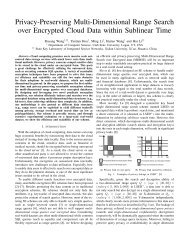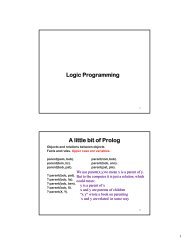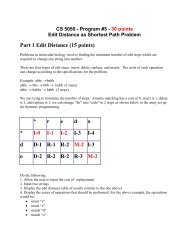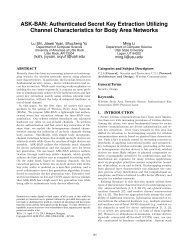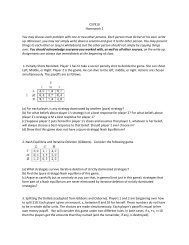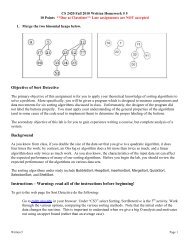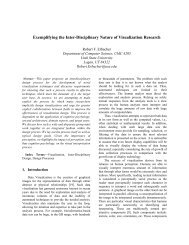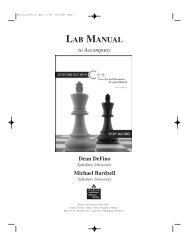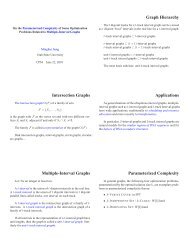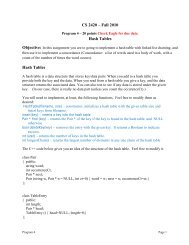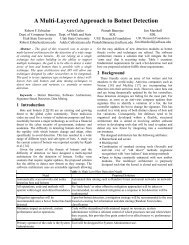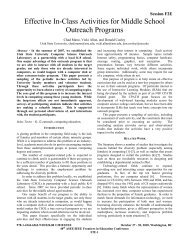Optimal Binary Search Tree
Optimal Binary Search Tree
Optimal Binary Search Tree
You also want an ePaper? Increase the reach of your titles
YUMPU automatically turns print PDFs into web optimized ePapers that Google loves.
<strong>Optimal</strong> <strong>Binary</strong> <strong>Search</strong> <strong>Tree</strong><br />
We solved the <strong>Optimal</strong> <strong>Binary</strong> search tree three ways<br />
(See http://www.cs.usu.edu/~allanv/cs5050/cs5050.html Problem 1)<br />
(1) Greedily<br />
(2) Using exhaustive recursion<br />
(3) Using Memoizing<br />
(4) A logical extension is to solve it via dynamic programming.<br />
Things to add:<br />
1. Interact with the user so they can pick problem size or frequency values<br />
2. Allow the user to pick a greedy strategy<br />
a. Select largest frequency<br />
b. Select node nearest the middle of the keys (to get a balanced tree)<br />
c. Other strategies? Perhaps build the tree from the bottom up – picking a sequence whose total<br />
frequency was smallest.<br />
3. Show how you use dynamic programming to not only find the cost of the optimal binary search tree,<br />
but build it.
4. Show the tree you create graphically. See the demo at<br />
http://webpages.ull.es/users/jriera/Docencia/AVL/AVL%20tree%20applet.htm for ideas.<br />
Perhaps you would show the nodes with a size proportional to its frequency.<br />
5. Demonstrate the time required to use the various methods. An animation found at<br />
http://www.cs.auckland.ac.nz/software/AlgAnim/opt_bin.html may serve as inspiration.<br />
6. Allow the user to "pull" on the nodes of a tree to suggest a better tree. When a user wants a node to<br />
"move up" – this could be implemented with a rotation (as in splay trees).



